Common Types of Handgun Ammunition.
Ammunition (informally ammo) is the material fired, scattered, dropped or detonated from any weapon. Having the proper ammunition is important whether it's for hunting or personal defense. Though ammunition might be an intimidating topic if one is not knowledgeable enough about firearms. Having the right ammunition is necessary on keeping your firearm safe while having its ideal performance. But before we talk about guns let us first go down to the basics, 5 different ammunition calibers for handguns. Here are the 5 commonly used ones, because each has their unique capabilities. Which of these are good for beginners? Which has a low recoil? And which has the best stopping power? Watch the video to know more about the topic.
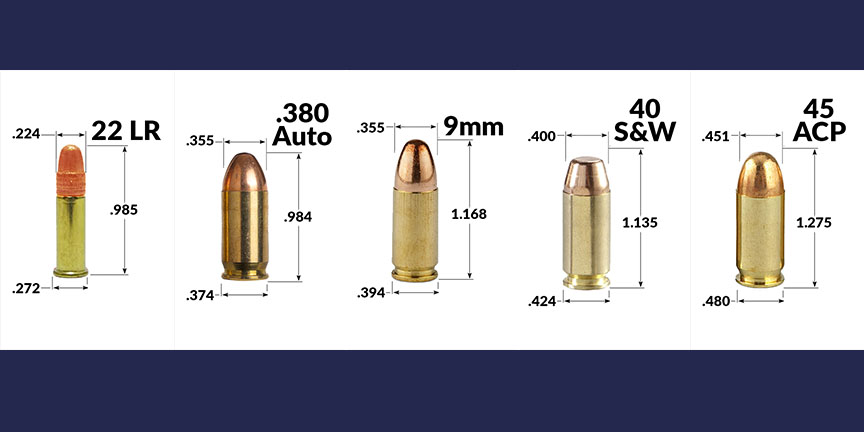
5 Commonly Used Ammunition Caliber for Handguns.
22 LR

Technical Information
Caliber: 22 LR
Bullet profile: Flat nose
Bullet weight: 2.59grams / 40grains
Bullet Style: Lead /Beeswax-tallow based lubricant
Case Type: Brass
Ballistics Information:
Muzzle velocity: 331m/s 1085 fps
Muzzle energy = 14.5 (Kg.m) / 104.9 (ft.lb)
Information
22 LR or mostly known as 22 Long Rifle ammo is one of the most popular ammunition in ammo industry. It's the most popular cartridge in the United State. For more than 100 years it's the first choice of hunters, sport shooters & law enforcement. American firearms manufacturer J. Stevens Arms & Tool Company introduced the cartridge in 1887. Low cost, minimal recoil, and relatively low noise make the .22lr an ideal cartridge for recreational shooting, initial firearms training, small-game hunting, and pest control. The low recoil of the cartridge makes it ideal for introductory firearms courses.
Pros
-Low Cost
-Low Recoil
-Recommended for inexperienced shooters.
Cons
-Power
-Reliability
.380 ACP

Technical Information
Caliber: 380 Auto
Bullet profile: round nose
Bullet weight: 85 grs
Bullet Style: Full Metal Jacket (FMJ)
Case Type: Brass
Ballistics Information:
Muzzle velocity= 300 m/s / 980 fps
Muzzle energy = 28.06 (Kg.m) / 203 ft⋅lbs
Information
380 Auto was developed by John Browning in 1908. I has different aliases like, 9x17, 9mm Kurz (German for short), and 9mm Browning. But 280 ACP and 9mm Luger is very different from one another, you can see this by the length, and performance. 380 ACP (Automatic Colt Pistol) was more popular in Europe than in the United States. In the 1st half of the twentieth century 380 was widely used by Military and Police in Europe. 380 ACP is straight-walled pistol cartridge and is relatively light round, but has a shorter range than most centerfire pistols.
Pros
There are a ton of lightweight pistols on the market chambered for .380, making it a great weapon and an option for self-defense. Also, anyone can shoot a .380 pistol without too much trouble.
Cons
.380 is a small round, and many feel that it lacks stopping power.
9mm Luger
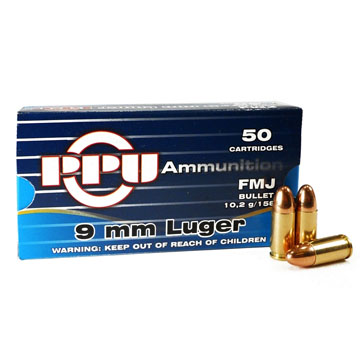
Technical Information
Caliber: 9mm Luger
Bullet Weight: 124 Grain
Bullet Style: Full Metal Jacket
Case Type: Brass
Bullet Profile: Round Nose
Ballistics Information:
Muzzle Velocity: 335 m/s / 1099 fps
Muzzle Energy: 45.76 (Kg.m) / 331 ft. lbs.
Information
It’s been proven on the battlefield and in law enforcement for more than a century, the most popular handgun ammunition, 9mm Parabellum or 9x19 better known as the 9mm Luger. It is created by German firearms designer, Georg Luger. The iconic cartridge is the planet’s most popular centerpiece handgun round. It’s rimless, tapered case allows easy cycling in semi-auto pistol. While the round’s low cost, module recoil and flat trajectory appeal to shooters worldwide. Countless officers, soldiers, and safety-conscious citizens rely on the 9mm Luger for target practice, competition and personal defense.
Pros
-Price. While price is not a ballistic characteristic it is definitely something you need to take into consideration. The amount purchased by law enforcement, the government, and private citizens ensures that prices stay low.
-Options. When it comes to the 9mm you will have a lot of options, especially when it comes to pistol calibers.
-Recoil. Compared to most popular handgun calibers, you’ll find that the standard 9mm has comparably low recoil. With less recoil, you can quickly place an accurate follow-up shot.
Cons
-Low Energy. Unfortunately, with less recoil comes less energy. This means that the 9mm bullet leaving your muzzle won’t carry as much energy and much of that energy will be lost in flight.
-Narrow Wound Channel. A standard 9mm will create a narrow wound channel because of its small diameter.
.40 S&W
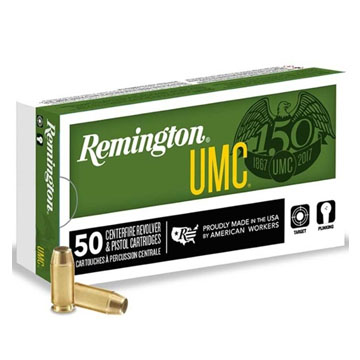
Technical Information
Caliber: 40 S&W
Bullet profile: flat nose
Bullet weight: 180 grs
Bullet Style: Full Metal Jacket (FMJ)
Case Type: Brass
Ballistics Information:
Muzzle velocity= 301.75 (m/s) / 990 fps
Muzzle energy = 54.19 (Kg.m) / 392 ft.lbs
Information
The power packed ammunition. When FBI wanted a handgun round packed with more power into a smaller pistol frame Smith & Wesson responded with 40 S&W. Introduced in 1990 it’s new compared to 100 year old cartridges like 9mm Luger and 45 ACP. But it quickly became mainstay for Law enforcement and personal defense with penetration and stopping power of a 40 caliber bullet. The 40 S&W has been popular to law enforcement agencies in the United States, Canada, Australia, and Brazil. While possessing nearly identical accuracy, drift and drop as the 9mm parabellum, it also has an energy advantage over the 9mm parabellum and 45ACP and with more manageable recoil then the 10mm auto cartridge. It’s a great choice for a variety of shooters and a threat to bad guys anywhere.
Pros
-Manageable recoil and consistent accuracy make the .40 S&W a common choice among law enforcement and the public for self-defense.
Cons
-Some may see the 40 S&W as a compromise for those wanting something bigger than a 9mm but not too big.
.45 ACP
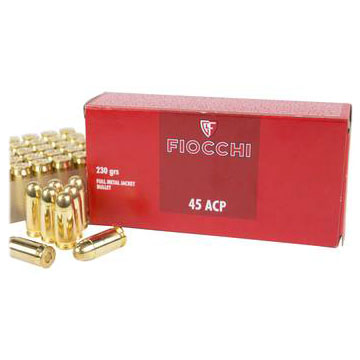
Technical Information
Caliber: 45 ACP
Bullet profile: round nose
Bullet weight: 230 grs
Bullet Style: Full Metal Jacket (FMJ)
Case Type: Brass
Ballistics Information:
Muzzle velocity: 255 (m/s) / 836.61 fps
Muzzle energy = 49.77 (Kg.m) / 360 (ft.lb)
Information
The 45 auto was created in 1904 by American firearms mastermind John Browning. It is also called the 45ACP – short for Automatic Colt Pistol. The stout, snub-nosed cartridge was built for a prototype cold semi-automatic that eventually became the model 1911 pistol standard used for the US Army through mid-1980. Proven in combat, the 45 auto is still a popular choice for personal defense. While 9mm Luger has gained favor in more recent years. The 45 auto’s ability to stop an attacker remains legendary. With a deadly blend of brute force, ballistics performance, accuracy, and stopping power. The time-tested 45 auto allows shooters to wield the same dependable firepower that generations of soldiers have reached for on the battlefield.
Pros
-The .45 ACP round offers a great balance of power and control. There are plenty of options for ammo and the prices are affordable.
Cons
-Recoil is fair, but may be too much for some shooters to handle. If concealing is a concern, some 45’s have a larger frame size which may not be best for CCW, but still good for self-defense in general.
What ammo caliber for handgun is best for you?
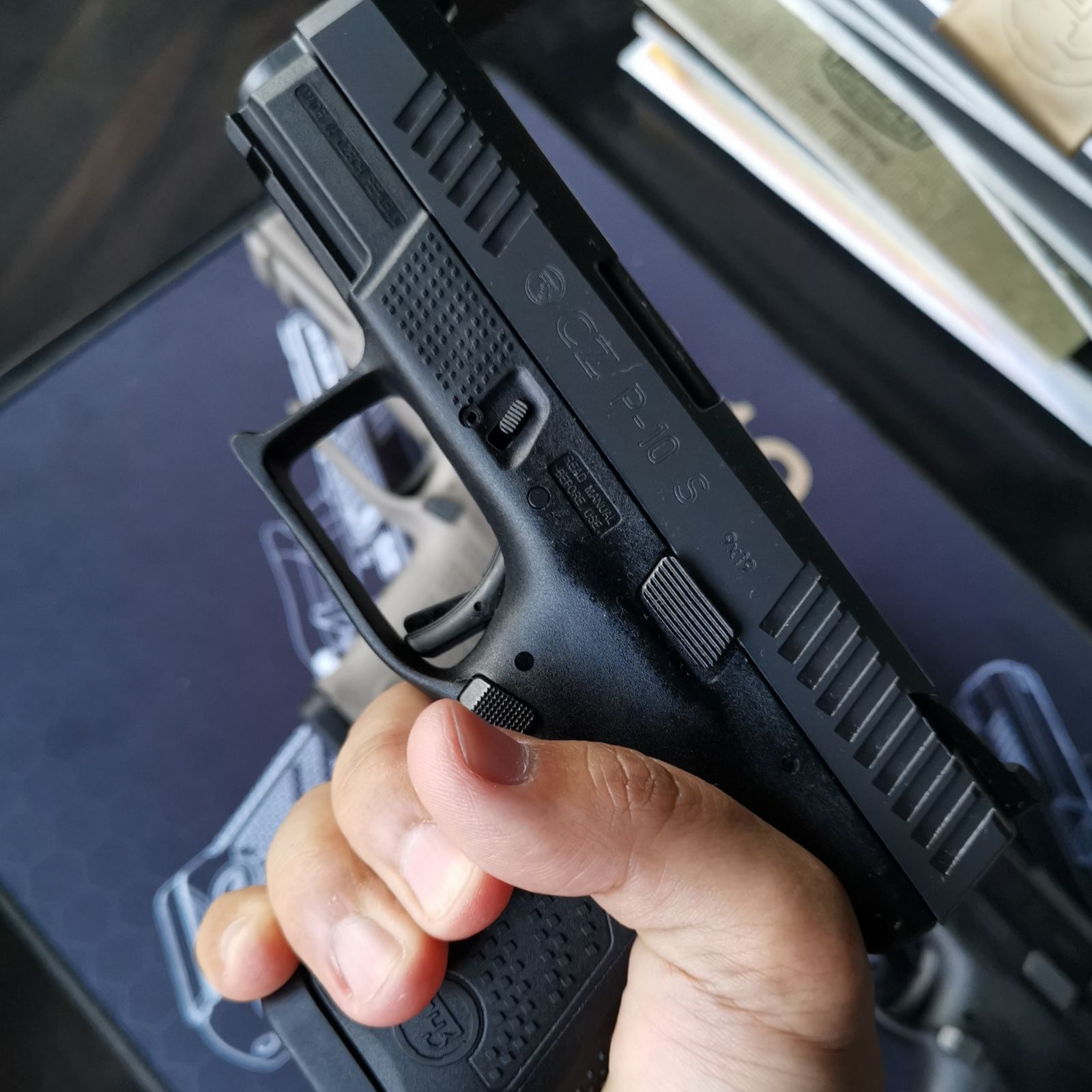
Sign up to receive regular updates and tips on everything firearms from P.B.Dionisio & Co.
Sources
- https://www.diffen.com/difference/.380_ACP_vs_9mm
- https://en.wikipedia.org/wiki/.380_ACP
- https://en.wikipedia.org/wiki/9%C3%9719mm_Parabellum
- https://en.wikipedia.org/wiki/.22_Long_Rifle
- https://en.wikipedia.org/wiki/.45_ACP
- https://en.wikipedia.org/wiki/.40_S%26W
- https://www.pewpewtactical.com/bullet-sizes-calibers-and-types/
- https://www.youtube.com/watch?v=mf1aOA5Geg8
- https://www.youtube.com/watch?v=Qv7IfL1TeqI
- https://www.laxammo.com/blog/pros-cons-popular-9mm-ammo/
- https://ammunitionstore.com/pages/news/popular-rounds-for-self-defense-and-the-pros-and-cons-of-each/





